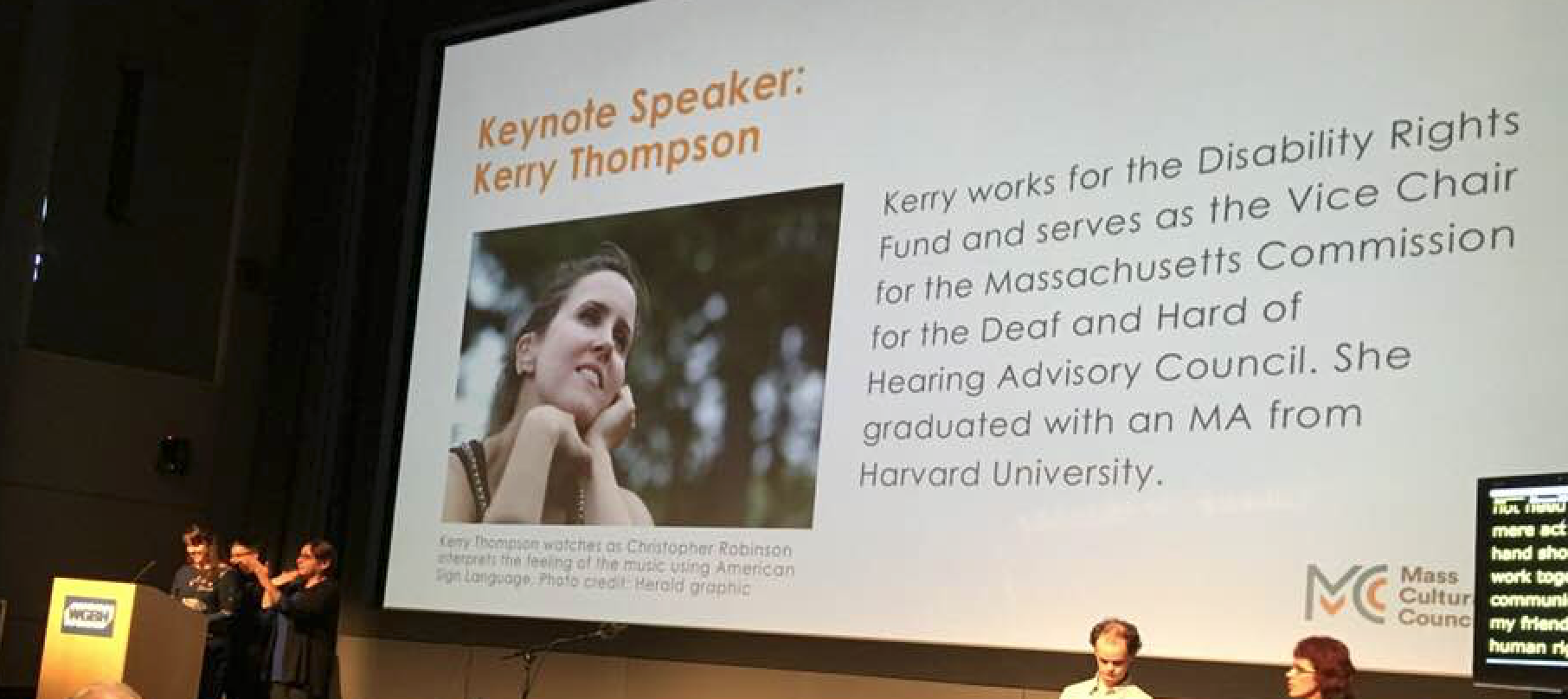
A Human Rights Issue – Access to the Arts
Silent Rhythms’ Executive Director, Kerry Thompson, spoke as the keynote speaker at the 2018 UP Awards hosted by the Massachusetts Cultural Council and WGBH. Below is her speech.
Thank you for this honor to speak before you and to each of you thank you for the work you do.
The arts has the capacity to change lives, to challenge perceptions, to inspire, and to create a dialogue. But did you know that access to the arts is considered a human right?
We are here today because of the mandate of the Americans with Disabilities Act – that people with disabilities have access to public space including museums and theaters. The ADA was passed in 1990 making access to the arts a disability and civil rights issue. But the concept of access to the arts was declared long before the ADA.
Exactly 70 years ago this year, the Universal Declaration of Human Rights was created at the end of World War II to serve as a global guideline to what is meant by human rights and for whom. The declaration was a roadmap for how to achieve peace while protecting the dignity of all people.
And yes, the arts was included in this peace declaration. Article 27 of the Declaration says that “everyone has the right to freely participate in the cultural life of the community, to enjoy the arts.”
Everyone is the key word in that statement. However, many countries including the US seem to be confused by what “everyone” means. There is a belief that because a person has a disability that they were not considered a human being, therefore human rights did not apply to them.
To address that ignorance, the United Nations Convention on the Rights of Persons with Disabilities (CRPD) was passed in 2007. The CRPD states that people with disabilities should enjoy their human rights on an equal basis as people without disabilities. Once again, the topic of access to the arts came up in a human rights document. Article 30 of the CRPD says that “people with disabilities should be able to participate in cultural life, recreation, and sports.”
The work you do is more than just access to the arts, you are part of a global movement to advance human rights for the world’s one billion people with disabilities.
Many of you know me as Kerry Thompson, the DeafBlind dancer and the founder of Silent Rhythms. But I also work for Disability Rights Fund, an international nonprofit to advance human rights for people with disabilities in developing countries.
Both here at home and overseas, I have seen people with disabilities advocating for their rights. Sometimes we are heard, sometimes we are not. Sometimes we are heard by a few while ignored by the majority. Sometimes policies are crafted, laws are passed, accommodations are created yet society is still slow to change. How do we get society to care about people with disabilities?
To answer that I need to get more personal. As a person who is DeafBlind, I come from the most marginalized population in the world – a population that is marginalized even within the disability community. We are often compared to unicorns but we are not mythical creatures, yes we are rare but we are very much real. My people are the group always left behind. We are often told that our deafness or our blindness can be accommodated but not both at the same time. Inclusion of people with Deafblindness should not be treated as impossible but a dream to strive for.
Twelve years ago, I learned how to salsa dance and granted, it was harder for me to learn being the only Deaf person and without an interpreter. But there were also a lot of people with two left feet so that even things out. I loved the dance and the lessons that dance taught me. I loved learning about other cultures. I loved the people I met and the friendships I formed.
I was born Deaf and when I was 10 I learned I was going blind. I used to think that when my eyesight got worse that I would have to retire from society and go into isolation. Blindness was always something on the horizon but now that the reality is here, I REFUSE to hide from society.
How do I find my own place in this world? How do I get people to care about disability especially those who are DeafBlind? My answer? I dance with them. To dance with someone, you do not need to speak verbally or know sign language, you simply hold out your hand. The mere act of holding out your hand shows a willingness to work together despite our differences.
That, my friend, is how you achieve human rights and inclusion by simply holding out your hand to another.
Help support Silent Rhythms’ efforts to ensure the human right of people with disabilities to access the arts. Consider making a donation.